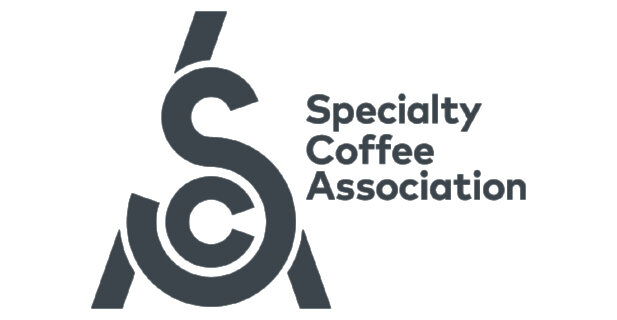SCA Style Guide: Photography and Imagery
Our photography is authentic, human, revealing, and engaging. It showcases both the world of specialty coffee at large and the people and processes who bring it to life - from source to final sip. The subject of our photography is broken down into three categories: locations, people, and processes.
Here are a few key elements of capturing photography in line with the SCA’s values:
Use a realistic/documentary approach
Highlight diversity
Keep post-production to an absolute minimum (if any!)
Try to keep negative space in image composition - think whitespace in design - so that copy or branding can be added
Take an equal amount of portrait and landscape orientation shots
Technical Notes
Flash
Avoid flash at all costs!
Straight Horizon/Background
Please make sure the horizon and/or objects in the background are vertically and horizontally straight, photos shouldn’t appear “crooked”. See examples of what we can’t use.
Focus
Bokeh is ok, but only incidentally. Use appropriate points of focus only (see “Photographing People” for more detail).
Lighting
We use natural light whenever possible.
Post-Processing
Please keep post-processing to a minimum! That being said, if you do need to post-process, the following applications are acceptable: white balance, exposure, highlights, and shadow corrections.
A note: Please do not bring up shadows! We want to avoid a style reminiscent of HDR photography.
Locations
These images highlight the many locations that we work in, all across the world. They consist of wide shots of breathtaking landscapes that demonstrate the scale of our industry and association.
People
Whether you’re photographing for an internal or external audience, it's important to photograph other people in a way that’s compassionate, inclusive, and respectful. These photos consist of reportage style shots of real community members in action, as well as portraiture set in location.
Our Community
We want to showcase our community, so we prefer to use photos showing the community in action over stock photos of models.
We prefer more candid shots (documentary/reportage style). Avoid photos of people looking directly into the camera, unless it’s a deliberate single-person portrait.
Our Core Values outline a number of key concepts that should be apparent in our photography. We value diverse perspectives. We create, produce, and support discrimination-free and harassment-free safe spaces for personal and professional collaboration, growth, and learning. The best way to communicate this through photography is to avoid taking photographs that:
Other or exoticize
Objectify
Include or feature lewd gestures
When used in publication, we have a strong preference to include captions that identify the photograph’s subject(s). Where possible, please ask and note the name of the individuals in photographs.
Coffee Supply Chain
Humanize people working in the supply chain: avoid headless or faceless photographs of farmers or farmworkers holding coffee cherries without context.
Avoid the commodification of coffee or the people involved in the making of it.
Event Branding
At events, try to ensure there are some shots with the appropriate event branding in the background.
Group Images
Groups of three people are ideal. Candid action shots are ideal, avoid staging or direct eye contact with the camera.
Portraits
Portraits of a single person is the one place where deliberate eye contact or staged photos are acceptable.
Wardrobe
Avoid heritage logos (SCAA, SCAE, etc.) and non-SCA logos during capture.
When using photos, check to ensure that the images feature the appropriate logos for the event. Avoid conflicting sponsor logos (if in doubt, check with the appropriate sponsorship team member for your event!).
Coffee & Processes
These images demonstrate our passion for and commitment to coffee, through observational shots that highlight the details specific to our industry. They use close crops and macro focus to create a sense of intrigue and texture.
Any photographs of coffee should reflect our organization’s respect for the natural and human resources required to grow, pick, process, roast, and brew coffee: We do not use images of spilled coffee (green, roasted, or brewed).
Avoid photographs featuring handfuls of coffee (cherry, green, or roasted) that dehumanize those who work in the coffee value chain.
At Origin
Coffee photographed at origin should look largely specialty (80% ripe cherry) and have minimal defects.
Roasted Coffee
Avoid overly roasted coffee, unless it’s directly related to the content presented.
Brewed Coffee
Branding
Include non-SCA branding only when related to the content presented.
Cups
Coffee cups should be clean and contain coffee (no empty cups). No cigarettes should be in shot.
Use caution when using paper cup imagery.
Latte Art
While the presence of latte art isn’t required in order to make a beverage specialty, there is an association between the two. If latte art is present, it should meet the following criteria:
Smooth foam with minimal bubbles; glossy, rich consistency.
Clear contrast between the surface of the beverage and the white milk foam.
The pattern should be aesthetically positioned within the cup.
Avoid latte art with unstable foam (i.e., a milk beverage that has been sitting too long).
Workspace
Prioritize photographs of clean workspaces that meet basic standards of food safety:
Clean steam wand
Minimal grounds on the counter
Clean grinder hoppers
